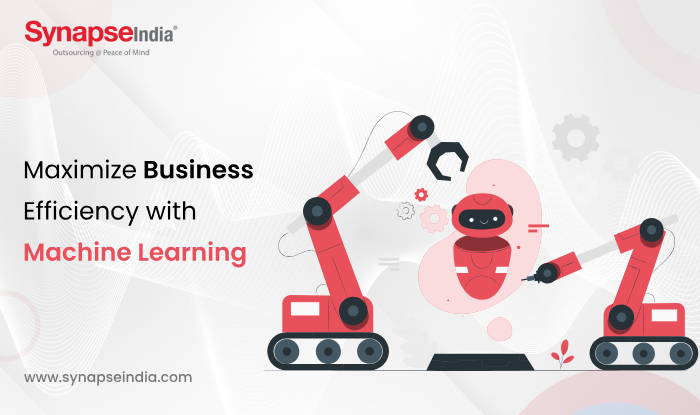 15 Mar 2024
15 Mar 2024
Achieving sustainable growth and success in the competitive business landscape of predefined scenarios requires optimizing efficiency and accuracy. Machine learning (ML) technology has shown to be a game-changer in this context. Machine learning gives businesses the ability to extract useful insights, automate procedures, and make data-driven decisions with previously unheard-of speed and accuracy by utilizing sophisticated algorithms and data. Through the application of machine learning models and algorithms customized for particular business goals, enterprises may derive meaningful insights from enormous volumes of data, reveal latent patterns, and predict future trends with exceptional precision.
In today's competitive market, this proactive approach enables firms to see opportunities, predict changes in the industry, and stay one step ahead of their rivals. Furthermore, by using iterative learning cycles, where algorithms adjust their predictions and suggestions over time based on fresh data, machine learning examples facilitate ongoing progress. In addition to improving insight accuracy, this iterative method helps firms stay flexible and adaptable to changing consumer demands and market conditions. Let’s find out how to maximize business efficiency and accuracy with Machine learning.

A combination including artificial intelligence (AI), and machine learning (ML) focuses on creating statistical models and algorithms. These models let computers learn from data and make predictions without letting to be explicitly programmed to do so. Also, machine learning algorithms (ML) do not need explicit human instructions; instead, they exploit patterns and insights from data to enhance their performance over time.
Three primary categories can be used to broadly classify machine learning examples algorithms:
This method involves training the algorithm on labeled data, where each input has a label corresponding to an output. Learning a mapping function that can correctly forecast the result for novel, unforeseen inputs is the aim. Two common supervised learning problems are regression and classification.
The objective of unsupervised learning is to find hidden patterns or structures in the data by training the algorithm on unlabeled data. Algorithms for unsupervised learning are frequently employed in applications including anomaly detection, dimensionality reduction, and clustering.
In this method, an algorithm gains knowledge by interacting with its surroundings and getting feedback in the form of incentives or sanctions for its deeds. Finding a policy that optimizes cumulative benefits over time is the aim. Common applications of reinforcement learning include autonomous systems, robotics, and gaming.
There are many different uses for machine learning in a variety of industries. Also, ML helps businesses accelerate innovation in a quickly changing digital ecosystem, automate decision-making procedures, and extract important insights by utilizing data and algorithms.
To optimize machine learning models' accuracy and efficiency, make sure relevant, high-quality data is readily available. Invest in data collecting, cleaning, and preprocessing methods to get rid of mistakes and inconsistencies and make sure the data is dependable and representative of training models.
By carefully choosing and developing pertinent features that effectively capture significant patterns and relationships within the data, you can optimize the effectiveness of machine learning examples algorithms. Make use of domain expertise and exploratory data analysis to pinpoint important variables and convert unstructured data into useful features that raise the accuracy of the model.
By choosing the best machine learning algorithms and fine-tuning their hyperparameters to get peak performance, you can maximize company efficiency and accuracy. To find the optimal model for your particular use case, experiment with a variety of models, including decision trees, random forests, support vector machines, and neural networks.
Establish rigorous monitoring and evaluation procedures to guarantee continuous enhancement and precision of machine learning models. Evaluate the model's performance regularly using pertinent measures, and compare forecasts to actual data. To keep the model's efficacy and dependability throughout time, detect and fix any drift in its performance.
Boost productivity in the workplace by automating repetitive operations and decision-making processes and incorporating machine learning models into current workflows. Use cloud-based services and APIs to deploy models into production environments with ease. This will allow for real-time forecasts and actionable insights that will help streamline operations and make well-informed business decisions.

Across a range of industries, applying machine learning examples techniques can greatly improve business accuracy and efficiency. Organizations can get important insights, automate procedures, and make more accurate data-driven decisions by utilizing the power of data and sophisticated algorithms. In today's data-driven environment, businesses can drive innovation, seize new opportunities, and achieve sustainable success by adhering to the aforementioned principles and efficiently utilizing machine learning skills.

